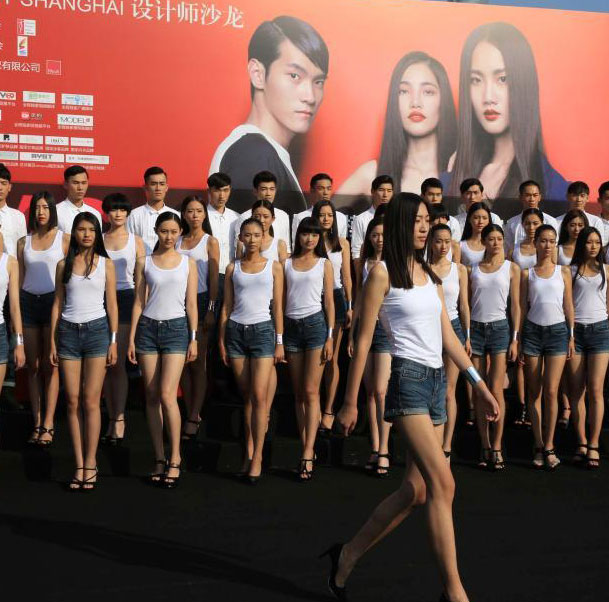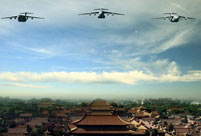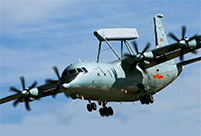 Top 100 beauties in the world!
Top 100 beauties in the world!
 Gallery: Who is the most beautiful one?
Gallery: Who is the most beautiful one?
 If you like autumn, put your hands in the air!
If you like autumn, put your hands in the air!
 Fan Bingbing's "Queen style" in new play
Fan Bingbing's "Queen style" in new play
 Lingerie show at 2014 Miss China
Lingerie show at 2014 Miss China
 J-10 fighters show aerobatic stunts in smog-free sky
J-10 fighters show aerobatic stunts in smog-free sky
 Charming contestants of Shanghai Int’l Model Contest
Charming contestants of Shanghai Int’l Model Contest
 Most amazing chi-pao beauties
Most amazing chi-pao beauties
 7 deadly animal attacks
Russia to launch 70 Proton rockets by 2020: official
7 deadly animal attacks
Russia to launch 70 Proton rockets by 2020: officialOn Wednesday, Beijing's office for severe air pollution emergency response issued an alert for hazardous air, the first warning after the Asia-Pacific Economic Cooperation (APEC) meeting in Beijing concluded just a few days ago. There is mockery online that now Beijing is bidding farewell to "APEC blue."
Even during the "APEC blue" period, there was already wide understanding that the smog-curbing measures were not sustainable and the social costs were just too high to bear. The air-clearing solutions adopted during the APEC forum have proven effective, but as Ma Jun, head of the Institute of Public & Environment Affairs, has pointed out, we can't just simply copy the "APEC blue" prescription.
The biggest legacy of "APEC blue" is that it demonstrates clearly what costs we need to pay in order to bring the blue skies back. As many experts have explained, judging from the pollution combating measures during the high-profile conference, in order to sustain "APEC blue" China must gradually restructure regional industries, especially the heaviest polluters.
Compared with traffic restrictions, measures aimed at cutting emissions by enterprises like coal-fired power plants bring a more noticeable effect. After the APEC meeting, not only should industrial restructuring be accelerated, but monitoring of enterprises' pollution emission must be strengthened as well. More of such numbers should be publicized, so that the public can participate in supervision. These numbers can also be used in pollutant tracking and studies of pollution sources.
The smog after "APEC blue" mirrors the plight of China at this stage of industrialization. The whole of society is wavering between the need for material profits and environmental interests. It is a severe challenge for both authorities and the public.
In the long process of pollution alleviation, it can be expected that whenever smog blankets Beijing there will be hash criticism. The smog is like a warning against China's way of modernization. But it should not stifle our hopes that Chinese will be able to gain both blue skies and social development.
It will still take time before the current stage of mass infrastructure building comes to an end. But as times goes by, pollution caused by construction is set to be limited by stricter standards. It should be a painful, yet hopeful way ahead.
The trajectory of the air pollution index after "APEC blue" has created a hot spot for debate over the smog issue. The government's stance is clear. It is attaching no less importance to environmental protection than to development. Blue skies are very costly, and sustaining "APEC blue" doesn't mean sacrificing development. China must find the way of affording blue skies while its momentum of development goes on.
 Female soldiers
Female soldiers Celebrity goddesses
Celebrity goddesses  Official trailer of Y-20
Official trailer of Y-20 Photos: Xi Jinping in Fujian
Photos: Xi Jinping in Fujian Standard faces for each countries
Standard faces for each countries China-made military transport aircraft gets ready
China-made military transport aircraft gets ready World Pole Dance Championship in China
World Pole Dance Championship in China 59-year-old Liu Xiaoqing still looks stunning
59-year-old Liu Xiaoqing still looks stunning  Shocking! Photos of Chinese fighters revealed
Shocking! Photos of Chinese fighters revealed Top 10 most dangerous jobs in the world
Top 10 most dangerous jobs in the world  Top 10 fifth generation jet fighters in the world
Top 10 fifth generation jet fighters in the world Top 10 Chinese goddesses
Top 10 Chinese goddesses  Top 20 hottest women in the world in 2014
Top 20 hottest women in the world in 2014 Top 10 pure beauties in showbiz
Top 10 pure beauties in showbiz  Top 10 world's highest-paid models 2014
Top 10 world's highest-paid models 2014 The most gorgeous Chinese women
The most gorgeous Chinese women Top 10 most handsome faces in Asia
Top 10 most handsome faces in AsiaDay|Week|Month